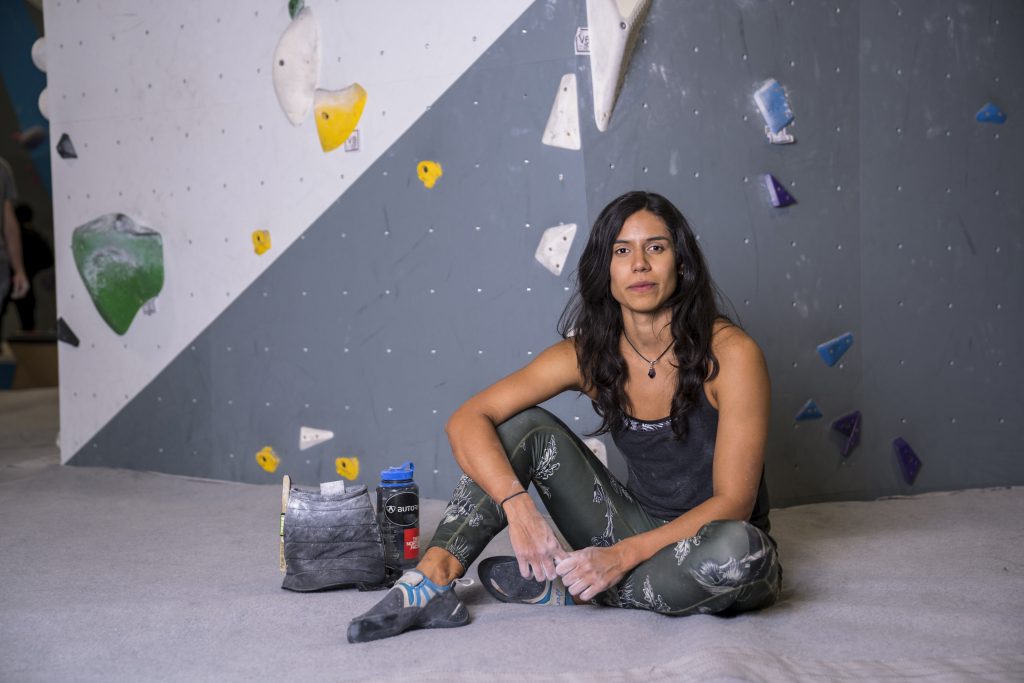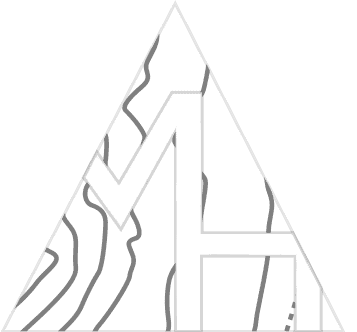As progressive as the world of sports seems to have become, there are still many areas that need to be improved. Climbing, for one, is a sport that still has a long way to go in terms of diversity. The climbing community is still predominantly white, and there is still not enough diversity to let people know that all people are welcome in the sport. This is what led climber Pilar Amado to found Sending in Color an organization committed to promoting diversity in the climbing community and open the doors up for more people from different ethnic backgrounds to join in. This is her story.

Can you introduce yourself?
My name is Pilar Amado, I’m originally from Colombia, born and raised, and I moved to the States when I was nineteen to attend college. I became a climber at 16 back in Colombia. Yet, once I moved to Chicago I stopped climbing because everything was new to me, with college, the culture, and I didn’t have a job so I couldn’t afford climbing. I missed it and I picked it up again. I’ve been climbing ever since.
How did you first get immersed in outdoor sports, specifically climbing?
I learned about climbing through my brother, back in Colombia. He used to climb when I was a teenager. Once I turned sixteen I really wanted to give it a try, so that’s when I started, and I pretty much became immediately hooked.
What is it about rock climbing that draws so many people to it?
I think it’s the individual challenge that climbing presents, there is no one who can finish a rock or boulder problem for you. No matter how strong you are and how much support you get from other people, at the end only you can work on your problem. I think that personal challenge is a big draw for individuals. If you’re lucky and you have a big sporting community around it, I think that’s also a big part of it.
Can you tell me a bit about your organizations? What are your mission statements?
Sending in Color has existed for three years and it was founded to create a more diverse climbing community, and break those different barriers of entry to the sport for all intersections of BIPOC (Black, Indigenous, People of Color), regardless of the level of expertise. You can be an experienced climber, you can be a new one, you can still have different barriers.
How did you end up reaching out to these varying communities?
The outreach was mainly on social media. In the beginning, I knew people at the gym, and my other co-founder also knew some people and word got around. That’s how people started coming to our meetups, we started doing monthly meetups and through that, we’ve also made some different connections with other gyms and grants, so that draws a lot of attention. We are hoping that in the future, we can work with other organizations to keep expanding our existing community, and make sure we’re bringing in other communities that we have not reached out to before.
What’s the best part about the climbing community?
It’s a question that I’ve been struggling with. I am not in love with the climbing community as a whole, especially lately, just through things I’ve seen personally and through Sending in Color. When I say the climbing community as a whole, obviously the majority of the climbing community is white.
What I’ve seen through personal interactions and in social media is that there is a climbing culture that is inherently white, because white people were the ones developing the sport. But there are many different aspects of white culture that ignore the needs of those outside of it, and last year’s BLM protests brought to light in an impossible to ignore way, those aspects. I believe that sparked a need for people within different sub-communities (climbing, restaurant industry, etc) to speak up and change the way things are/were working to try and improve how things work and make it better for everybody.
But as much as I would love to say that a lot of white climbers got it and said ‘yes, we need to change,’ I think there’s still a lot of resistance within the community. I think there’s also a lot of resistance from climbing gyms to truly support organizations like the one I have. We saw it across different community organizations where the gyms, instead of turning to us for help, it was more like ‘oh, we’re going to do it our way now, and you can give us your work for free or you’re not going be taken into consideration.’ So a lot of that within the climbing community as a whole, I’m not very happy with. But I do love the community that I have been able to create through Sending in Color
You also mentioned that an important part of climbing with others is to treat one another as just another human being. Can you elaborate on that?
I would say climbing as a sport, if it existed in a vacuum with no culture attached to it, it promotes inclusivity because part of what I mentioned earlier, which is that it doesn’t matter how strong you are, what body type you are, none of that matters. At the end of the day, you’re only challenging yourself, and only you can finish something. That way, I feel like it’s very inclusive because I could be climbing with someone shorter, stronger, etc. That says that you can work on the same thing with different bodies, and everybody’s going to do something different, or is going to finish the same problem in different ways.
What does the future look like for your organizations, and climbing in general?
The future for Sending in Color, I hope, is very exciting. We have been doing a lot of internal work to ensure that when we’re saying that we want to be as inclusive as possible for our initiatives, our meetups, or any partnerships that we do. We’re also developing climbing-specific JEDI training, that stands for Justice, Equity, Diversity, and Inclusion, because we saw that there was a big gap between generic D&I or DEI training, and we were being personally impacted by the lack of training that was provided to gyms. So that’s what I’m working on for Sending in Color. And for climbing, I hope that organizations like mine keep popping up, and that gyms listen to them and their needs and the needs of the community. I do hope that climbing becomes as inclusive a sport as it can be, but I still feel like we have a long way to go.
Along with sharing for this interview, Pilar also joined a 2020 Mappy Hour Chicago panel which you can watch here:

